One of my favorite Far Side cartoons refers to the bird family mentioned in the title of this post, though only obliquely. I have to admit that it took me a few months before I finally got the joke.
Hokkaido is not a bad place to see ducks- though for most of us, there is no need to travel to Hokkaido to see Mallards.
In a lengthy post on ducks in Japan, Mark Brazil (the bird guide author) praises wild Mallards for being colorful, gregarious, and capable of thriving in suburban and urban environments alongside people …
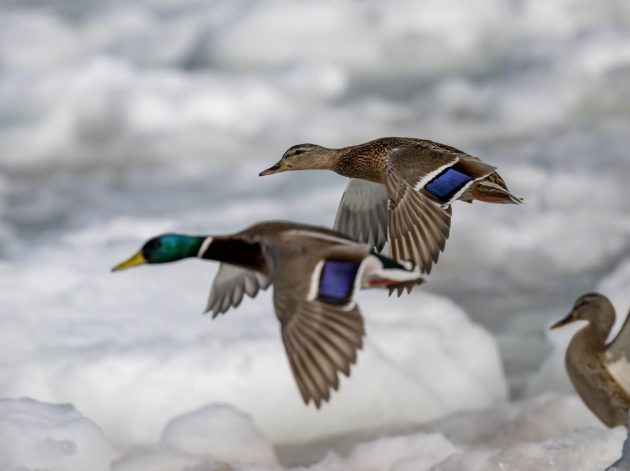
… which makes them attractive at duck ponds but creates issues due to their capacity to interbreed with related species.

For example, one paper reports on a hybrid between a Mallard and a Falcated Duck in Sapporo, Hokkaido.
A Russian paper claims that there are signs of moderate genetic isolation between sedentary Mallards living in Russian cities and migratory ones living in the surrounding countryside.

Similarly, not many birders will come to Hokkaido to see Common Coot.

Like male humans, coots only have a small vocal repertoire of just 4 calls. The analogy does not end there – like male humans, this “small vocal repertoire during the breeding season expresses complex behavioral motivations and individual signature”.

As with many duck species, adult Eurasian Wigeons are more likely to be male than female (source).
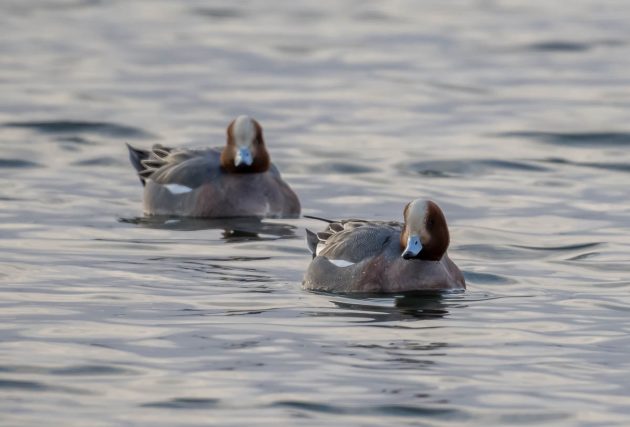
This is likely due to higher predation rates for female birds during the breeding season – among all wigeons assessed in the study, 54.5% were male.
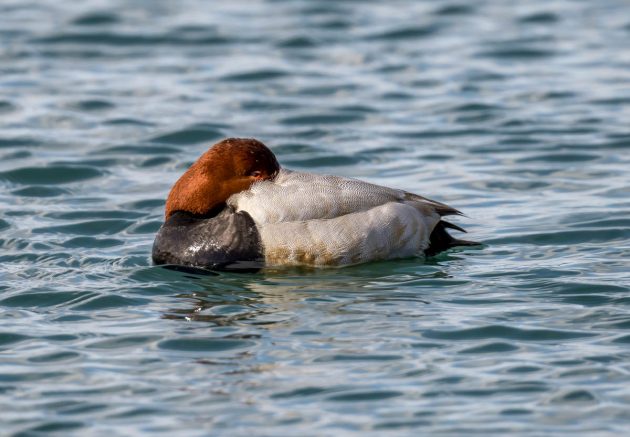
The scientific name Mareca penelope refers to Penelope, a Greek princess, the wife of Ulysses. During the long absence of her husband at the siege of Troy, she started weaving a tapestry and promised her suitors to pick one when done … but unraveled the day’s work every night. Sounds a bit unfair, but if you had seen her suitors, you would have done the same.
Penelope is also the first name of one of my favorite artists, Penelope Houston. You can listen to “Putting me in the Ground” or watch a full concert here.

Seeing the scientific name of the Common Goldeneye, Bucephala clangula, I thought of the horse Alexander The Great rode on his campaigns, which was named Bucephalus. It seems Bucephala means bull-headed, which gave both the duck and the horse its name.

Of course, in today’s world, it would have been surprising if that name (Bucephalus) were not to be used by some tech company. Indeed, Bucephalus (www.bucephalus.tech) “combines unparalleled intelligence, agility, and ease of use to align your strategic planning with growth of long-term free cash flow”. Their website also offers to “Learn about our journey to becoming leaders in AI-powered supply and demand planning”. It seems to be an ambitious company, using the slogan “We solve the world’s most complex problems”, a branding that at some point was also suggested for 10,000 Birds but which did not quite make it through our final selection stages as we did not want to get tasked with finding a solution to the situation in the Middle East.
According to the BTO, the Red-breasted Merganser can be told by its punk-style hairdo.

The HBW wonders about this crest: “Its spectacular asymmetrical nuchal crest appears incongruous with symmetry elsewhere in nature”.

Sports fishers – particularly those not into punk music – apparently worry that Red-breasted Mergansers compete with one of their favorite targets, the walleye, for prey in places such as Lake Erie (source). However, the study found that while the diets of walleye and mergansers overlapped considerably, mergansers generally consumed smaller fish than walleye.

Red-breasted Mergansers prefer to nest inside the colonies of terns and gulls despite the feeling of not quite belonging there (having lived in China for 20 years now, I know the feeling). The reason is that these colonies offer some protection from predation, leading to higher nesting success (source).

Even within these colonies, the mergansers try to conceal their nests, for example by locating them in dense stands of Marram Grass (source).

Like beer vendors at punk rock concerts, Snowy Egrets apparently benefit from hunting fish in association with Red-breasted Mergansers – they catch more prey (source).

Unfortunately, the paper on this research only provides some potential reasons (increased catch rate, larger size of prey) for the benefits to the egrets, rather than a proven rationale. And so, rather predictably, the paper concludes with a call for more research.

The Northern Pintail does not look like a punk at all. Not for nothing, eBird calls it an elegant, slender duck.

Apparently, there is a North American Waterfowl Management Plan that sets out an objective of 5.5 million Northern Pintails – but due to population declines, the current figure is only about 1.8 million (source).
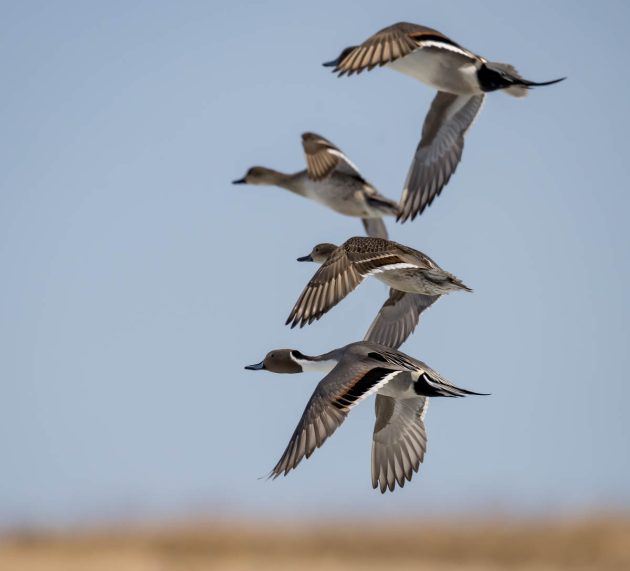
A 2002 thesis provides an explanation – different from other ducks, Northern Pintails like to nest in crop stubble habitat, which has become more abundant with the elimination of fall tillage. And these nests are particularly vulnerable to predation.

In recent years, a small cottage industry of papers on the economic value of birdwatching seems to have developed. For the Northern Pintail, such a paper suggests that “Summed expenditures and consumer surplus for Northern Pintail viewing were annually valued at $70M, and annual sport hunting totaled $31M (2014 USD). Expenditures for viewing ($42M) were more than twice as high than those for hunting ($18M). Estimates of consumer surplus, defined as the amount consumers are willing to pay above their current expenditures, were $15M greater for viewing ($28M) than for hunting”.

In other words, slightly simplified: having Northern Pintails around is like printing money.

You might think that the invasion of zebra mussels into the Great Lakes, the habitat of the Greater Scaup, is good news for them as it increases their food supply.
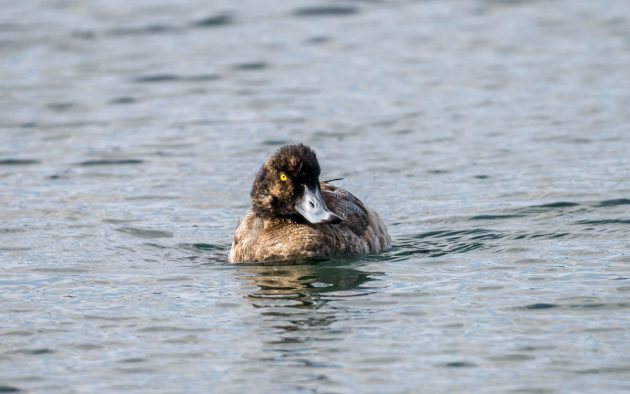
Unfortunately, the zebra mussels accumulate more contaminants than the alternative prey – and this accumulation is passed on to the Greater Scaup (source).

The scientific name Aythya marila presumably refers to the back of the male (marila means coal dust).


The Black Scoter is listed as Near Threatened despite its scientific name Melanitta Americana, which should give MAGA enthusiasts a strong incentive to protect the bird.

Weirdly, the HBW also only shows the North American distribution of the species, only admitting in the small print that the species also breeds in northern Europe and Asia. Or maybe I mistakenly looked this up in the Handbook of the Birds of America.

eBird paints a surprisingly unflattering picture of the (in my eyes rather attractive) Black Scoter, calling it a “plump diving duck” and remarking on its potbellied shape in flight.

The Long-tailed Duck is listed as Vulnerable.

In fact, there exists the somewhat grandiose-sounding “International Single Species Action Plan for the Conservation of the Long-tailed Duck” paid for (among others) by the Federal Ministry for the Environment, Nature Conservation, Building and Nuclear Safety of Germany.

Many Russian breeding habitats of the Long-tailed Duck were lost when they were transformed into oil and gas extraction sites due to the resulting disturbance and oil pollution (source).
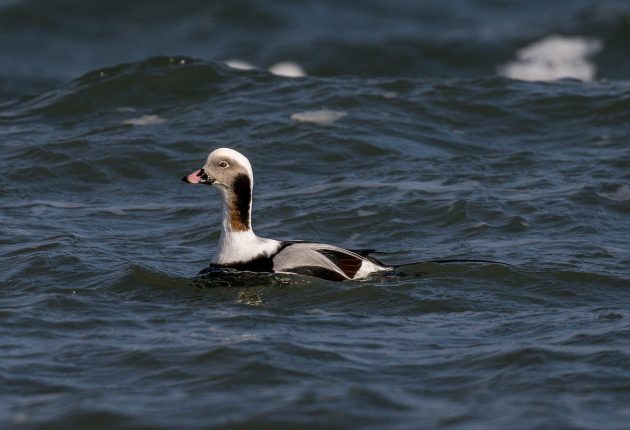
It is an arctic species is a true breeding in tundra and taiga regions around the globe – which is also indicated in its scientific name Clangula hyemalis (hyemalis means “of winter”).

According to the National Wildlife Federation, the splashy colors of the male Harlequin Duck “–seemingly assembled by a committee of first graders–are among the showiest in the waterfowl world.”

Harlequin Duck society is matriarchal – at the coast, young adult females pick a male and return salmonlike with him to its natal streams to breed (source).

Its scientific name Histrionicus histrionicus means “like a harlequin” or “histrionic”, which the Cambridge Dictionary defines as “very emotional and energetic, but not sincere or without real meaning”.

Understanding the population development of Harlequin Ducks requires duck surveys – however, these are not much fun, according to a biologist: “Where you are wet from head to toe all day, every day and the temp is floating above freezing during the spring. And it’s just, you’re waiting to crawl into a wet sleeping bag or get back to a cabin and maybe you can get a fire going to heat yourself up, all in the hope that you find two ducks in five days.”

While the species is listed as Least Concern, it faces several threats including overhunting, disturbance, and habitat loss. The Exxon Valdez oil spill in 1989 also killed many of them, and the negative effects of this spill were long-lasting (source).

Should you marry young or rather wait, assuming not marrying at all is not an option? For Harlequin Ducks, the equivalent question is whether to pair early in the breeding season or later. A study found no obvious benefits in early pairing for female ducks but a negative impact on male ducks, as they spend more time guarding their mate.
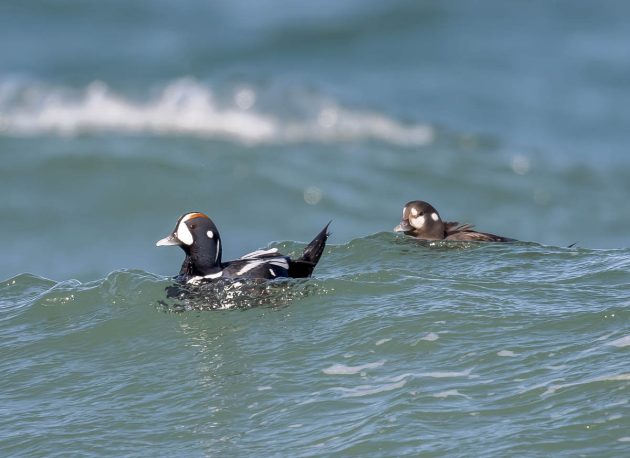
While they are very good swimmers even in very rough waters (HBW: ” Their ability to swim and feed among the boulders of a raging river is unmatched”), Harlequin Ducks apparently have more broken bones than any other waterfowl species. Maybe they sometimes overdo the rough swimming a bit.

Source link

